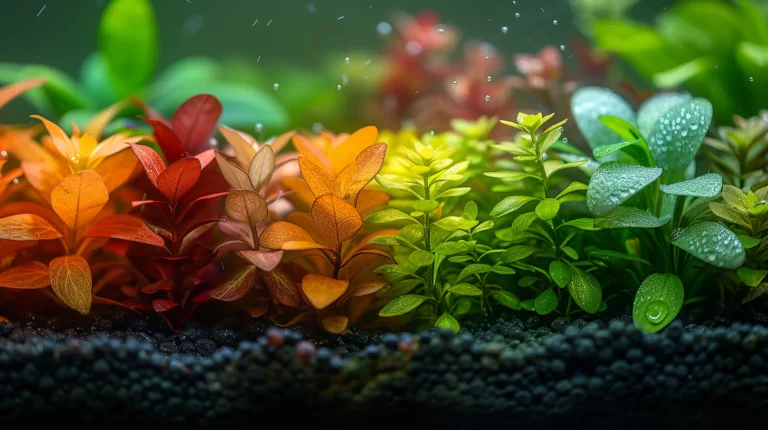As we explore the realm of aquatic wonders, the question arises: how big can Plecos truly grow? These remarkable creatures, with their potential to reach substantial sizes, hold secrets that reveal the mysteries of their growth. Join us as we uncover the fascinating journey of these giant aquatic guardians and discover the factors that contribute to their magnificent stature. Plecos, also known as suckerfish, are known to grow to sizes exceeding 2 feet in length in the right conditions. Their growth is influenced by various factors such as water quality, tank size, and diet. Additionally, these creatures are known for their ability to breathe air, which allows them to survive brief periods of fish suffocation on land. This unique adaptation is just one of the many incredible traits that make Plecos such fascinating creatures.
Let’s venture into this exploration together, where the world of Plecos opens up to show the awe-inspiring possibilities that await.
Key Takeaways
- Plecos can grow up to 18 inches or larger.
- Growth varies based on species, genetics, food, and environment.
- Monitoring growth rate is crucial for health assessment.
- Suitable habitat and care influence Pleco growth.
- Spacious tank requirements are essential for their well-being.
Understanding the Pleco: A Brief Overview
Plecos, also known as sucker-mouth catfish, are a diverse group of species varying in size, color, and patterns. From the common Pleco to the vibrant Clown Plecos, these fish add a unique charm to any aquarium.
These nocturnal creatures scavenge for algae and plant matter in dim light, using their specialized mouths to suck onto surfaces and scrape off food with ease. With the right conditions, proper care, and nutrition, Plecos can thrive for many years, becoming beloved members of the aquatic community.
How Big Can Plecos Get: Exploring Their Size and Growth
Plecos can grow to impressive sizes, with some reaching up to 18 inches or even larger. The size of Plecos varies among different species, showcasing the diversity within this group of fish. Factors such as food, genetics, and environment play vital roles in determining their growth.
By considering the genetic predispositions of these fish and ensuring they have a nutritious diet in a well-maintained environment, we can help them reach their full size potential. Monitoring their growth rate allows us to assess their health and make adjustments as needed to support their development.
Housing the Pleco: Aquarium and Tank Requirements

When setting up a tank for Plecos, consider their potential size. Plecos require spacious aquariums, ideally 30 gallons or more, providing ample space to swim and grow comfortably.
Maintaining proper water conditions is crucial, with clean, well-filtered water and stable temperature and pH levels. Gravel, decor, and plants mimic their natural habitat, provide hiding spots, and contribute to their overall well-being. Avoid overcrowding as it can lead to stress and aggression among Plecos.
Moving Plecos to Larger Tanks or Ponds: When and How

Recognizing the signs that indicate your Pleco requires more space is essential for their well-being and growth. As responsible owners, we must keep a close eye on our aquatic friends to make sure they’ve the room they need to thrive.
When it comes to moving Plecos to larger tanks or ponds, here are some key tips to keep in mind:
- Monitor Growth: Keep an eye on your Pleco’s size in relation to the tank. If they’re nearing their maximum length of around two feet, it may be time to think about upgrading to a larger space.
- Behavior Changes: If you notice your Pleco becoming more sluggish or aggressive, it could be a sign of discomfort due to lack of space.
- Water Quality: Large Plecos produce more waste, so maintaining water quality is important. A larger tank or pond can help dilute waste concentrations.
- Tank Setup: Make sure the new tank or pond has adequate hiding spots and substrate for your Pleco to feel secure in their larger environment.
Pleco Care and Feeding: Key Tips for Healthy Growth
To ensure your Pleco’s healthy growth, provide a well-rounded diet tailored to their specific nutritional needs. Plecos are herbivores, so include vegetables like zucchini, cucumbers, and algae wafers in their diet.
Routine care, like regular tank cleanings, water changes, and health checks, maintains a healthy environment for them. By keeping a close eye on their habitat and behavior, you can address any issues promptly and ensure their continued growth.
Conclusion
To sum up, Plecos can grow to impressive sizes, reaching up to 18 inches or even larger depending on the species.
By providing a spacious aquarium with suitable habitat conditions, proper care, and regular health checks, these giant aquatic guardians can thrive and reach their full potential.
With the right environment and feeding regimen, Plecos can become magnificent additions to any aquatic setup, showcasing their beauty and size for all to admire.
Frequently Asked Questions
How big can plecos get?
Plecos are a type of catfish that can grow to be quite large, with some species reaching up to 18 inches in length.
Are plecos commonly kept as pets?
Yes, plecos are a common choice for freshwater aquarium hobbyists as they are often easy to care for and can help keep tanks clean by eating algae.
What type of environment do plecos prefer?
Plecos are freshwater fish that typically stay near the bottom of the tank and enjoy hiding in caves or under rocks, especially during the night.
How fast do plecos grow?
Plecos can grow relatively quickly, especially when young, but the growth rate will vary depending on the species and the tank conditions.
Can plecos be kept in a 10-gallon tank?
While some smaller pleco species may be kept in a 10-gallon tank when young, most plecos grow quite large and will need a much larger tank as they mature.






